It was founded in 1968 by Gordon E. Moore and Robert Noyce. Its employee number 4 was Andrew Grove, who ran the company more or less from his arrival in the 1960s through his retirement in the 1990s, building it into one of the largest and most successful businesses in the world.
Moore and Noyce wanted to name their new company 'Moore Noyce' but that was already trademarked by a hotel chain, so they had to settle for an acronym of INTegrated ELectronics.
The company started as a memory manufacturer before making the switch to processors. Andrew Grove described this transition in the book Only the Paranoid Survive.
During the 1990s, Intel's Intel Architecture Labs (IAL) was responsible for many of the hardware innovations of the Personal Computer, including the PCI Bus, the Universal Serial Bus (USB), and the now-dominant architecture for multi-processor servers. IAL's software efforts met with a more mixed fate; its video and graphics software was important in the development of software digital video, but later its efforts were largely overshadowed by competition from Microsoft. The competition between Intel and Microsoft was revealed in testimony at the Microsoft anti-trust trial.
Intel's dominance in the x86 microprocessor market led to numerous charges of antitrust violations over the years, including FTC investigations in both the late 1980s and in 1999, and civil actions such as the 1997 suit by Digital Equipment Corporation (DEC) and a patent suit by Intergraph. Intel's market dominance (at one time it controlled over 85% of the market for 32-bit PC microprocessors), combined with Intel's own hardball legal tactics (such as its infamous 338 patent suit versus PC manufacturers) made it an attractive target for litigation, but few of the lawsuits ever amounted to anything. Currently, the only major competitor to Intel on the x86 processor market is Advanced Micro Devices, although some smaller competitors such as Transmeta produce low-consumption processors for portable equipment.
Intel currently (as of 2004) produces microprocessors, networking components, motherboard chipsets, and more.
Processor-the part of a computer (a microprocessor chip) that does most of the data processing; the CPU and the memory form the central part of a computer to which the peripherals are attached
THE LATEST PROCESSOR
1.

For dual-core and single-core processing:
Intel® Wide Dynamic Execution Improves execution speed and efficiency, delivering more instructions per clock cycle. Each core can complete up to four full instructions simultaneously.
Intel® Smart Memory Access Improves system performance by optimizing the use of the available data bandwidth.
Intel® Advanced Digital Media Boost Accelerates the execution of Streaming SIMD Extension (SSE) instructions to significantly improve the performance on a broad range of applications, including video, audio, image, media boost, photo processing, multimedia, encryption, financial, engineering, and scientific applications. The 128-bit SSE instructions are now issued at a throughput rate of one per clock cycle, effectively doubling execution speed on a per clock basis over previous generation processors.
Intel® 64 architecture± An enhancement to Intel® 32-bit architecture that allows the processor to access larger amounts of memory. With appropriate 64-bit supporting hardware and software, platforms based on an Intel® processor supporting Intel® 64 architecture enable the use of extended virtual and physical memory.
Execute Disable Bit° Provides enhanced virus protection when deployed with a supported operating system. The Execute Disable Bit marks memory as executable or non-executable, allowing the processor to raise an error to the operating system. If malicious code attempts to run in non-executable memory, the malicious code is prevented from infecting the system.
For dual-core processing only:
Intel® Advanced Smart Cache The shared L2 cache is dynamically allocated to each processor core based on workload. This increases the probability that each core can access data from fast L2 cache, significantly reducing latency to frequently used data and improving performance.
2.

SAN FRANCISCO - Clarkdale to Core 2 Duo and Core 2 Quad (and the North Bridge): Hasta la Vista, baby.
Intel’s latest processor iteration has taken the shrink-ray to its Nehalem architecture, wrapping the company’s first 32-nanometer CPU in a brand new name (Westmere) and integrating a brand-new graphics die onto the processor. But don’t hold your breath for a perfect all-in-one package just yet: While the new Core i3 and Core i5 Clarkdale chips support a host of new options for Blu-Ray enthusiasts and casual graphics aficionados (crank those Windows 7 Aero details, connect multiple monitors, and run picture-in-picture on your Blu-ray discs), Clarkdale still delivers little to help more advanced gaming scenarios.
Upcoming Chips: What’s In It For You?
First, know that Clarkfield represents a total of seven new CPU variants: Four in the Core i5 series, two of the first Core i3 CPUs, and one Pentium G6950 entry-level variant. The prices and frequencies range from the $87, 2.8-GHz Pentium G6950 to the $284, 3.46-GHz Core i5-670. If you take a look at the load-out versus current Lynnfield-based CPUs (Core i7 800-series and Core i5-700 series processors), you might think you’ve entered into that ol’ faster-dual-core-or-slower-quad-core war from years past. You haven’t.
Clarkdale CPUs offer better performance for a better price than all but the most costly Core 2 Duo and Core 2 Quad processors (the Penryn family). However, just because they also sport faster speeds than their Lynnfield cohorts–including the “turbo clock” overclocked Core i5-600 series –doesn’t mean that they’re speedier CPUs in general. A 3.33-GHz Core i5-661 Intel test platform (using Intel’s new DH55TC motherboard) fell slightly shy of the WorldBench 6 scores from similarly-configured Lynnfield desktop systems that we’ve reviewed recently. However, it did overtake the scores of all stock-clocked Core i7-920 systems–a 45nm Bloomfield processor.
Compatibility
Four chipsets (all using the LGA 1156 socket) are compatible with the Clarkdale platform: the H55, H57, Q57, and standard Lynnfield P55-based motherboards. Here’s where it gets interesting. H55, H57, and Q57-based boards are identical in their overall construction, with each offering a new subset of Intel features as you go up the price range. H57-based motherboards can support two additional USB ports, two extra PCI Express x1 lanes, and support for Intel’s RAID-based Rapid Storage Technology. Q57 boards, more for business use, include Intel’s Active Management Technology–remote technical support. You can stick a Clarkdale processor in a P55 motherboard or, vice versa, a Lynnfield processor in an H55, H57, or Q57 motherboard. Either situation forces you to use a discrete graphics card, however.
Graphics Performance
As mentioned, integrated gaming performance isn’t for tough titles. While Clarkdale systems might thrive on less demanding titles, the CPU’s integrated graphics weren’t enough to deliver playable frame-rates on PC World’s Unreal Tournament 3 benchmark at anything but a 1024-by-768 resolution screen at medium quality settings or less. And a forewarning: the sixteen PCI Express x16 lanes supported by Clarkdale chips cannot be split into dual x8 lanes for CrossFire or SLI should you aspire to transform your Clarkdale rig into a souped-up gaming machine. Clarkdale intends to make its mark on more common computers… including those in your living room.
And if you’re interested in a mobile version of Clarkdale, you’ll want to check out all the details on its equivalent for notebooks, Arrandale.
When Will Clarkdale Processors Arrive?
Intel hasn’t announced availability of its Clarkdale processors just yet, but the not-quite-a-rumor is that the company will be unveiling the Westmere lineup preceding CEO Paul Otellini’s keynote speech at the 2010 Consumer Electronics Show this Thursday.
3.

Concurrent Technologies introduces a leading edge high performance 3U VPX-REDI single board computer based on Intel’s latest dual-core processors. The TR 501/36x is designed to comply with the OpenVPX VITA 65 standard, and utilizes the 1.86 GHz Intel Core 2 Duo SL9400 processor and the Intel® GS45 mobile class chipset both from the Intel® embedded roadmap, ensuring long term availability. The board supports up to 8 Gbytes DDR3-1066 soldered SDRAM and a wide variety of I/O interfaces including an XMC site. The rugged conduction cooled variant, TR 501/36x RC, supports VPX RE
4.

Business takes you places-when it does, you want the best Intel®-based laptops for business with Intel® Centrino® with vPro™ technology. Combining remote manageability, unique hardware-assisted and proactive security features, and breakthrough mobile performance, these laptops provide reliability IT can trust, unleashed.
5.

The Intel® Atom™ processor was designed from the ground up for low power and innovative devices, enabling a broad range of new devices from Mobile Internet Devices (MIDs) to netbooks and entry-level desktop PCs, and more.
The next-generation Intel Atom processor for net-books and entry-level desktops continues to provide innovation through integrated graphics built directly into the CPU using Intel® 45nm high-k metal gate technology, enabling smaller and more energy efficient designs.
Enjoy easy Internet access on-the-go with a compact net-book with long battery life as an Internet companion. Bring the Internet and basic computing to new places around the home with an entry-level desktop.
MOTHERBOARD-is the main circuit board of a microcomputer. The motherboard contains the connectors for attaching additional boards. Typically, the motherboard contains the CPU, BIOS, memory, mass storage interfaces, serial and parallel ports, expansion slots, and all the controllers required to control standard peripheral devices, such as the display screen, keyboard, and disk drive. Collectively, all these chips that reside on the motherboard are known as the motherboard's chipset.
LATEST MOTHERBOARD
1.

Four new desktop boards have launched in conjunction with the latest Intel® Core™ processors. Take advantage of these feature-rich boards and the new intelligent performance features of the Intel® Core™ i7-800 series processors and Intel® Core™ i5-700 series processor today.Designed to provide the performance needed to enable you to create, share, and enjoy digital entertainment.The Intel® Desktop Board DP55WG fulfills all your digital creation and consumption needs running the latest Intel® Core™ processors in the LGA1156 socket.
2.

The Intel Desktop Board DP55WB is built with the new Intel P55 Express Chipset, supporting the Intel Core i7 and Intel Core i5 processors in the LGA1156 package. The revolutionary two-chip layout enables lower power consumption and more advanced performance tuning for a smoother, more realistic experience.
3.

Form factor ATX (12.00 inches by 9.60 inches [304.80 millimeters by 243.84 millimeters])
Processor Click View supported processors for the most current list of compatible processors.
At product launch, this desktop board supports:
* Support for a Intel® Core™ i7 processor in an LGA1366 socket
Memory
* Four 240-pin DDR3 SDRAM Dual Inline Memory Module (DIMM) sockets
* Support for DDR3 1600 MHzς, DDR3 1333 MHzς, DDR3 1066 MHz
* Support for up to 16 GBς of system memory
Chipset
* Intel® X58 Express Chipset
Audio Intel® High Definition Audio subsystem in the following configuration:
* 10-channel (7.1) Dolby Home Theater* Audio subsystem with five analog audio outputs and two S/PDIF digital audio outputs (coaxial and optical) using the Realtek* ALC889 audio codec
Video
* Nvidia SLI* and ATI CrossFire* multi-GPU platform support enables two graphics cards to work together for ultimate 3D gaming performance and visual quality
* Full support of next-generation ATI CrossFire* and Nvidia SLI*
LAN support Gigabit (10/100/1000 Mbits/sec) LAN subsystem
Peripheral interfaces
* Twelve USB 2.0 ports (8 external ports, 2 internal headers)
* Six Serial ATA 3.0 Gb/s ports, including 2 eSATA port with RAID support supplied by a Marvell* controller
* Two IEEE-1394a ports (1 external port, 1 internal header)
* Consumer IR receiver and emitter (via internal headers)
Expansion capabilities
* One PCI Conventional* bus add-in card connectors (SMBus routed to PCI Conventional bus add-in card connector)
* One primary PCI Express* 2.0 x16 (electrical x16) bus add-in card connector
* One secondary PCI Express 2.0 x16 (electrical x16) bus add-in card connector
* One PCI Express* 1.0a x16 (electrical x4) bus add-in card connector
4.

5.
 EVGA posted up pictures today of a pair of upcoming motherboards based on the H55 and H57 chipsets and the boards look killer to say the least. EVGA is not saying anything else about the boards other than details are coming very soon. Expect to see more about these boards during out CES 2010 coverage!
EVGA posted up pictures today of a pair of upcoming motherboards based on the H55 and H57 chipsets and the boards look killer to say the least. EVGA is not saying anything else about the boards other than details are coming very soon. Expect to see more about these boards during out CES 2010 coverage!



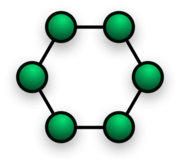










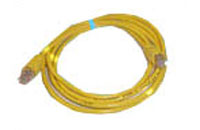
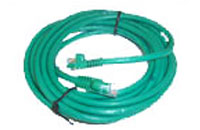
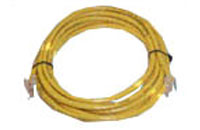
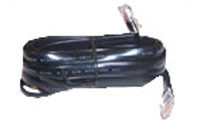
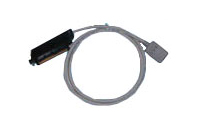
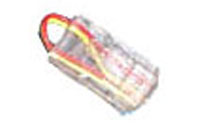
 audio Video cable
audio Video cable  computer cable
computer cable networking cable
networking cable



